Last Updated on April 13, 2022 by
I am continuing the series of exploring my hometown Vadodara, where I lived for years and yet did not explore or even know about so many amazing places. I have taken backyard travel very seriously and trying to know my city better and visit some beautiful and undiscovered gems. Today’s blog is about my visit to Sevasi Vav, also known as Vidyadhar ni Vav in Vadodara.
I did not know that a Vav (translated to a stepwell) existed in Vadodara till early this year when I read a blog of a fellow blogger. I decided to pay a visit keeping minimal hopes, just like my visit to Tambekar Wada, given its dilapidated state showcased in the photos.
Table of Contents
What are stepwells?
Stepwells are wells or ponds in which the water is reached by descending a set of steps to the water level. They may be multi-storied, and often ornamented with intricate carvings on its pillars and walls. Stepwells are known as Vav in Gujarati and Baori in Hindi. Read about the haunted stepwell in Delhi – Agrasen ki Baoli and the gem called Panna Meena ka Kund, Jaipur
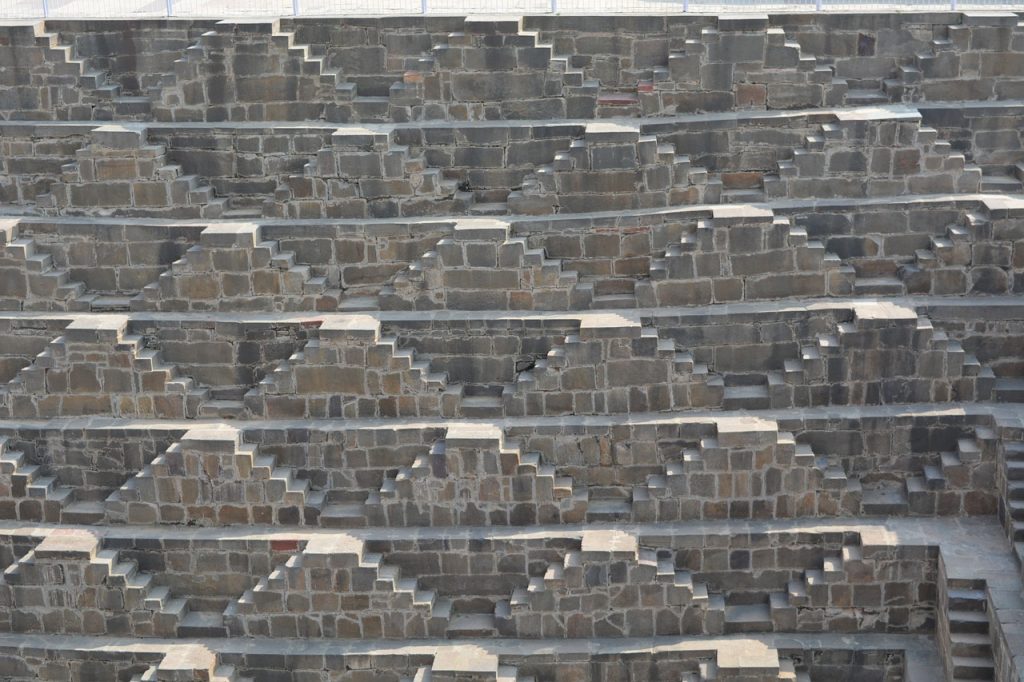
History of Stepwells
In the yesteryears, stepwells were a source of water as they were away from water bodies and majorly constructed in the arid regions of India. Their water storage effectiveness helped local residents survive for years, in the semi-arid climate and seasonal fluctuations.
The architecture of stepwells includes a cylinder well that extends down to the water table which provides water for drinking, washing, bathing, and farming.
Construction of most stepwells had an inspiration or story behind it and was constructed by royal, wealthy, or powerful patrons. They were nothing less than complex engineering feats and stunning examples of both Hindu and Islamic architecture.
Stepwells were also considered women’s spaces’, where women came not just to fill water, but also to talk and sometimes dance, uninhibitedly with other women, without a worry in the world.
Stepwells in India – Present Scenario
While thousands of stepwells were present in India, modernization and a general lack of apathy towards these traditional structures have led most stepwells to ruins. They are now filthy places filled with garbage, crumbling with time. The surviving stepwells can be found in Karnataka, Gujarat, Rajasthan, Delhi, Madhya Pradesh and Maharashtra.
While Adalaj ni Vav, Ahmedabad and Rani ki Vav, Patan are the popular ones in Gujarat, there are an estimated 200 stepwells in the state. Their state is unknown and their survival is even more questionable as authorities have turned a blind eye towards them.

About Sevasi Vav (Vidyadhar ni Vav) Vadodara
Legend has it that Raja Haridas created Vidyadhar ni vav in memory of the legendary spiritual leader, Shri Vidyadhar, in 1543 CE. Since the Vav is located in the Sevasi village, it started gaining popularity as Sevasi Vav.
Legend also says that young girls decked in gold were sacrificed at Sevasi Vav on full moon nights, for prosperity.
Location of Sevasi Vav
500-year-old Sevasi Vav is located just outside the city limits – about 8km towards Sindhrot or New Alkapuri. It can be easily found by following google directions. Look out for ‘Sevasi’ board on your left and turn towards it. The stepwell is on the main road as soon as you turn. There are hardly any signboards so one has to be careful and vigilant.
My visit to Sevasi Vav
I drove down to Sevasi Vav on my motorbike with a local friend who knew the exact location. I reached the Vav in less than 10 minutes on a weekday morning.
There was a bamboo fence at the entrance and my heart sank thinking that it is closed to visitors. On probing a shopkeeper opposite the stepwell, he asked us to lift the bamboo and go inside. He even directed us to park our motorbikes.
I rejoiced, not only because the stepwell was open but also because we were the only visitors there. The perks of going early morning!
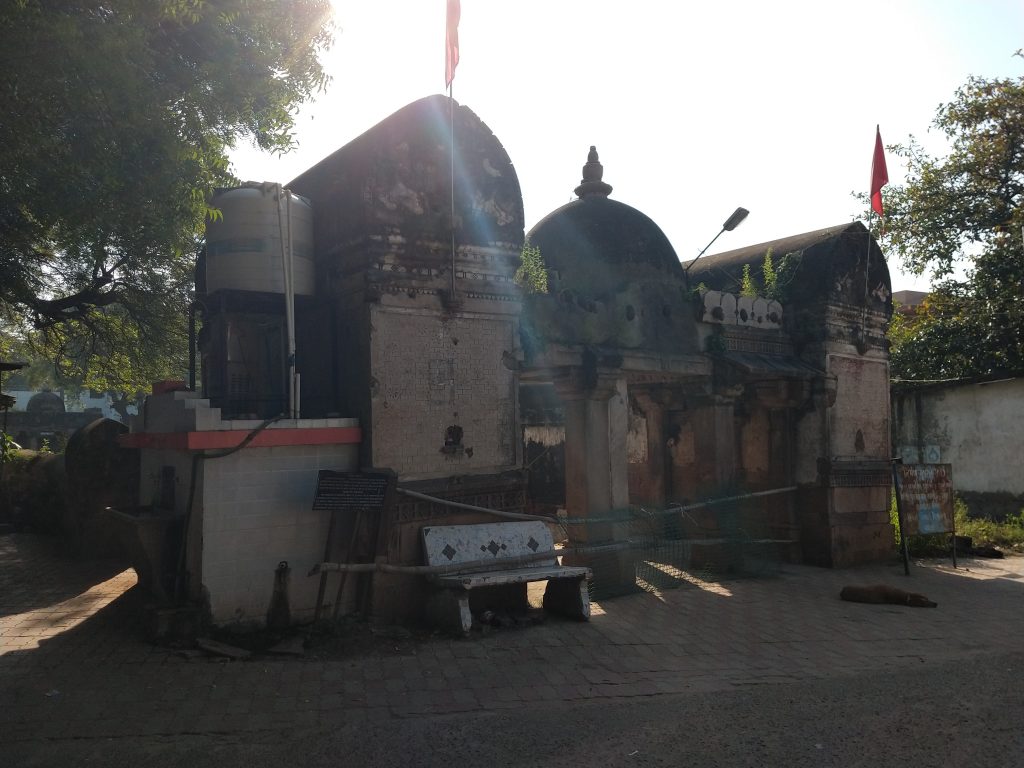
As I walked towards the humble entrance I could already notice that the stepwell was not in a great condition as compared to the others that I have visited. I noticed that the entrance gate had carved tigers and elephants. Like the typical structure of a stepwell, two parallel alleyways were present on both sides of the stepwell. The purpose of this is to serve as a bridge. In other stepwells, these alleyways are closed for visitors for safety reasons, however, it was open in Sevasi Vav Vadodara.
And there it was, the seven storeyed Sevasi Vav with amazing architecture and carvings. I could only imagine the glory it might have stood in. As I went in, I noticed that the Vav is constructed in the combination of brick masonry and stone. It is laid out in the east-west direction and has intricate sculptures, engraved on the walls and pillars. Some of the carvings at Sevasi Vav are of toran motifs, floral prints, bells, and animals.
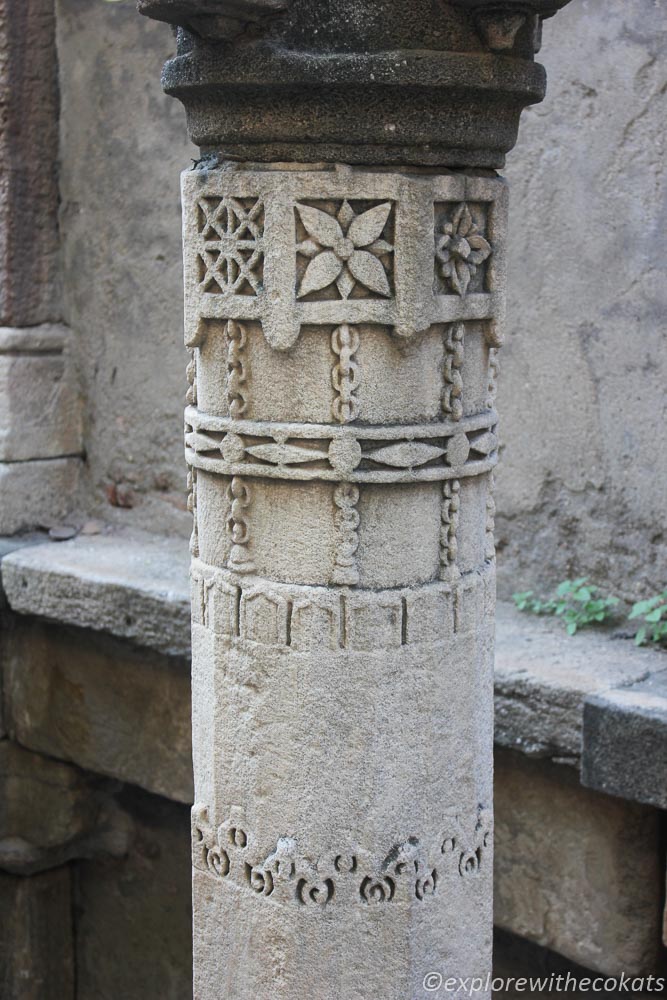

As I stepped down a few storeys, it got darker, damper and cooler. The symmetry at each storey astounded me which has been subtly taken over by nature – shrubs have grown all over, enhancing the beauty of Sevasi Vav, one of the must-visit places in Vadodara.
I noticed a large platform with prayer flags, coconuts and diyas, which meant there was an idol there and people visited this vav for religious activities. Many pillars also had diyas, which made me wonder if it is lit up on special days like Dusshera or Diwali, and if it is, how amazing would it look!

I climbed down a few more storeys after paying my respects to the deity. But it was super dark and the stagnant water odour was unbearable to me. I and my friend decided to explore the dome at the end of the alleyway which was visible from the entrance. We exited the main entrance and took the pathway from the side of the stepwell premises to reach the centre of the stepwell, which was the Seventh Storey. The dome has two entrance-exit leading through stairs. The balcony inside the dome gives a vivid view of the stepwell from the top and also of the well on the other side. If you can stand the odour of the stagnant water and putrefying rubbish, you can even take a peek inside the well. I did not want to, so I called it a day.
I spent close to 90 minutes exploring, photographing, climbing and mostly appreciating this age-old structure which should definitely be on your list of must-visit Vadodara tourist places! Read a detailed guide on Things to do in Vadodara.

Photography at Sevasi Vav
Sevasi Vav is becoming extremely popular for photography enthusiasts because the ruins do look beautiful. An exposed brick wall is one of the beautiful highlights here. No wonder why a lot of pre-wedding photoshoots and fashion photoshoots have started taking place here.
As long as you respect the marvel, it is absolutely fine to do photoshoots at Sevasi Vav Vadodara.
Sustainable tips to explore Sevasi Vav Vadodara
- Being an ancient stepwell that is already dwindling with age, respect the structures by not defacing them.
- Do not harm the structures by carving or writing on it.
- Do not enter places that are closed off, there’s a reason why they are closed.
- Do not dispose of garbage in the stepwell premises or in the water well.
Sevasi Vav Vadodara can be visited during one day trip from Ahmedabad. Read more Gujarat posts here:
Pin this post!
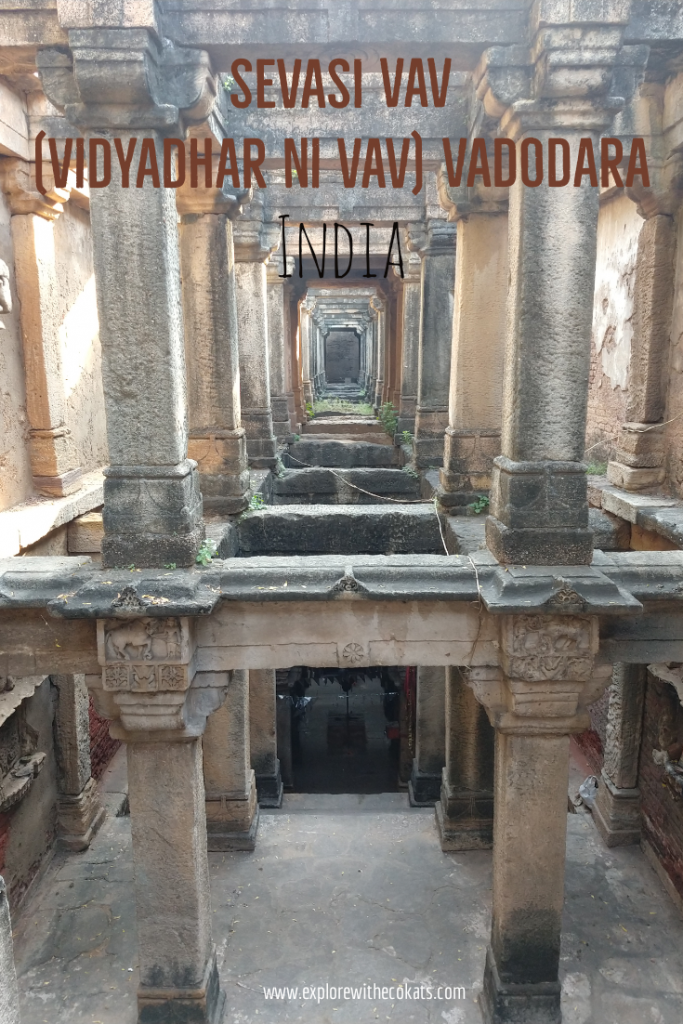
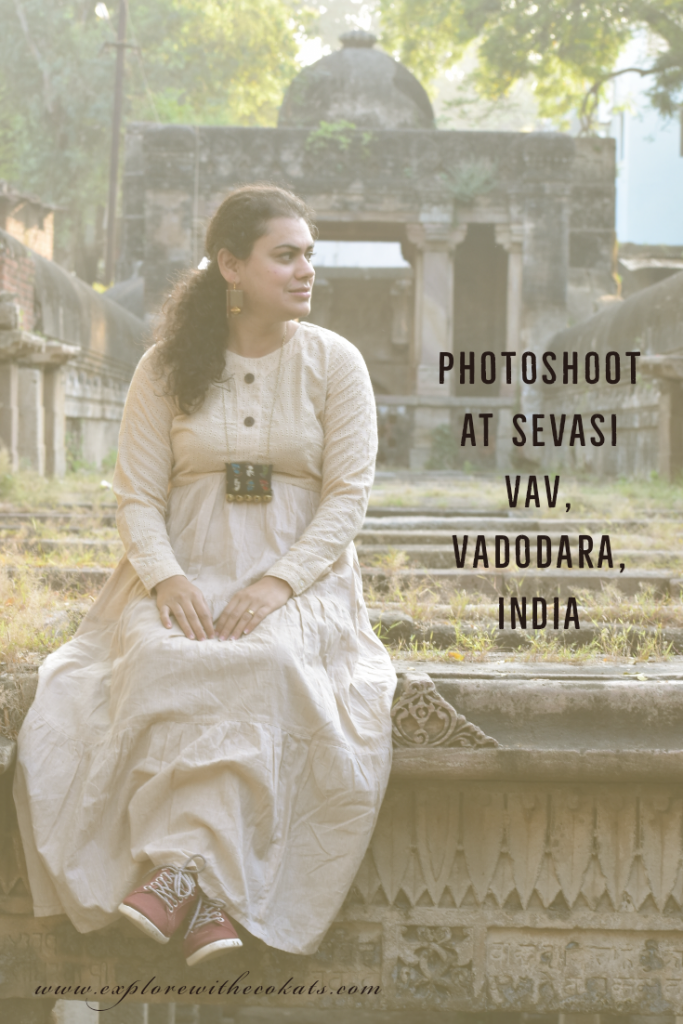

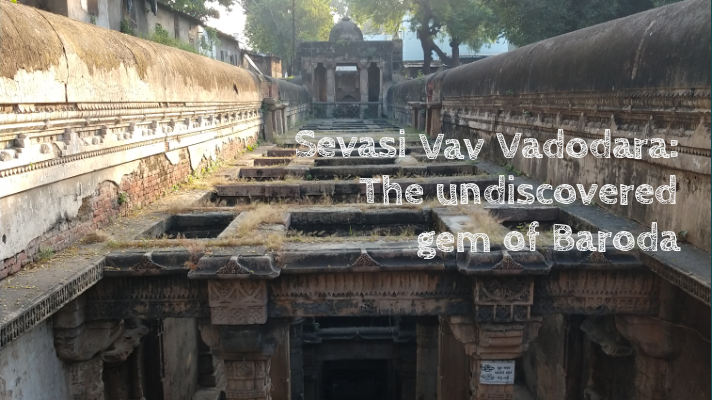
1 comment
Beautiful photos! I am dying to get to India.